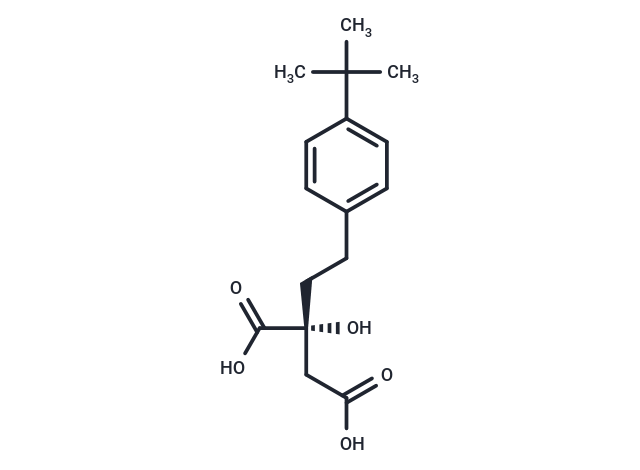Shopping Cart
Remove All Your shopping cart is currently empty
Your shopping cart is currently empty
PF-06649298 is an inhibitor of sodium-coupled citrate transporter which specifically interacts with NaCT with an IC 50 value of 16.2 μM to inhibits the transport of citrate in human hepatocytes. PF-06649298 can be used in regulating metabolism of glucose and metabolism of lipid [1] [2].

| Pack Size | Price | USA Warehouse | Global Warehouse | Quantity |
|---|---|---|---|---|
| 25 mg | $1,620 | 6-8 weeks | 6-8 weeks | |
| 50 mg | $2,110 | 6-8 weeks | 6-8 weeks | |
| 1 mL x 10 mM (in DMSO) | $397 | 6-8 weeks | 6-8 weeks |
| Description | PF-06649298 is an inhibitor of sodium-coupled citrate transporter which specifically interacts with NaCT with an IC 50 value of 16.2 μM to inhibits the transport of citrate in human hepatocytes. PF-06649298 can be used in regulating metabolism of glucose and metabolism of lipid [1] [2]. |
| In vitro | PF-06649298, at concentrations ranging from 0 to 100 μM over a 30-minute incubation period, demonstrates selective inhibition of citrate uptake, particularly targeting the NaCT transporter over dicarboxylate transporters NaDC1 and NaDC3. This effect is observed across HEK-293 cells (expressing NaCT, NaDC1, or NaDC3), human hepatocytes, and mouse hepatocytes, with IC50 values of 408 nM, >100 μM, >100 μM, 16.2 μM, and 4.5 μM, respectively. These findings underscore the compound's specific action on citrate transport mechanisms within the tested cell types. |
| In vivo | PF-06649298 (250 mg/kg; p.o. twice a day; for 21 days) effectively mitigates glucose intolerance in high-fat diet (HFD) mice [1], significantly reducing plasma glucose, hepatic triglycerides, diacylglycerides, and acyl-carnitines levels, thus reversing glucose intolerance in HFD-induced mice [2]. |
| Molecular Weight | 294.34 |
| Formula | C16H22O5 |
| Cas No. | 1854061-16-7 |
| Smiles | C(C)(C)(C)C1=CC=C(CC[C@@](CC(O)=O)(C(O)=O)O)C=C1 |
| Storage | Powder: -20°C for 3 years | In solvent: -80°C for 1 year | Shipping with blue ice/Shipping at ambient temperature. |
| Size | Quantity | Unit Price | Amount | Operation |
|---|

Copyright © 2015-2026 TargetMol Chemicals Inc. All Rights Reserved.